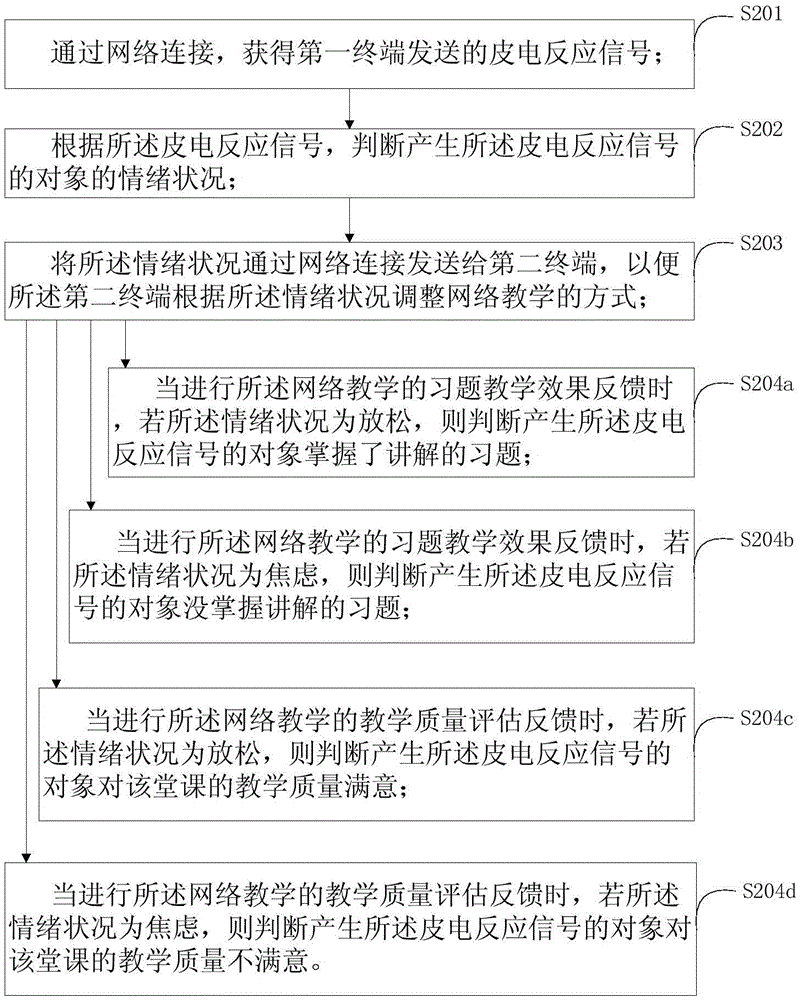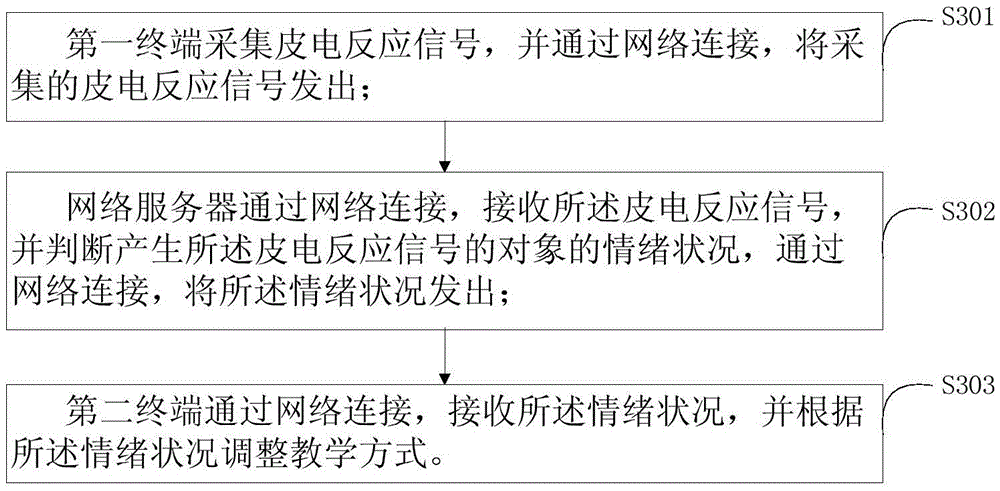Method, device and system for feeding back network teaching effect
A network teaching and network connection technology, which is applied in the field of network teaching effect feedback based on electrodermal response signals, can solve the problems of insufficient authenticity of information, discounting of authenticity and effectiveness, and inability to truly obtain the recognition of students' course quality, etc. Achieve good user experience and high accuracy
- Summary
- Abstract
- Description
- Claims
- Application Information
AI Technical Summary
Problems solved by technology
Method used
Image
Examples
Embodiment 1
[0063] Please refer to figure 1 , which is a method flow chart of the first embodiment of the method for feedbacking online teaching effects based on electrodermal response signals provided by the present invention. The method for feedbacking network teaching effects based on electrodermal response signals provided by the embodiments of the present invention can be applied to network servers in various forms of knowledge teaching such as distance education and online classrooms.
[0064] The method for feedbacking network teaching effects based on electrodermal response signals includes:
[0065] Step S101. Obtain a GSR signal sent by a first terminal through a network connection.
[0066] It should be noted that the galvanic skin response signal of the first terminal is collected by a galvanic skin sensor arranged at the first terminal. The process in which skin resistance or conductance changes with changes in skin sweat gland function is called skin galvanic response, als...
Embodiment 2
[0072] Please refer to figure 2 , which is a method flow chart of the second embodiment of the method for feedbacking online teaching effects based on electrodermal response signals provided by the present invention. The method for feedbacking online teaching effects based on the electrodermal response signal provided by the embodiment of the present invention is based on the first embodiment, and specifically explains the judgment of the emotional state of the subject generating the electrodermal response signal.
[0073] The method for feedbacking network teaching effects based on electrodermal response signals includes:
[0074] Step S201. Obtain a GSR signal sent by a first terminal through a network connection.
[0075] Step S202 , according to the galvanic skin response signal, determine the emotional state of the subject generating the galvanic skin response signal.
[0076] Preferably, the judging the emotional state of the subject generating the galvanic skin respo...
Embodiment 3
[0098] Please refer to image 3 , which is a method flow chart of the third embodiment of the method for feedbacking online teaching effects based on electrodermal response signals provided by the present invention. The method for feedbacking online teaching effects based on electrodermal response signals provided by the embodiments of the present invention can be applied to systems in various forms of knowledge teaching such as distance education and online classrooms.
[0099] The method for feedbacking network teaching effects based on electrodermal response signals includes:
[0100] Step S301, the first terminal collects the GSR signal, and connects to the network to send the collected GSR signal.
[0101] Step S302, the network server receives the GSR signal through the network connection, judges the emotional state of the subject generating the GSR signal, and sends the emotional state through the network connection.
[0102] Step S303, the second terminal receives the ...
PUM
 Login to View More
Login to View More Abstract
Description
Claims
Application Information
 Login to View More
Login to View More - R&D
- Intellectual Property
- Life Sciences
- Materials
- Tech Scout
- Unparalleled Data Quality
- Higher Quality Content
- 60% Fewer Hallucinations
Browse by: Latest US Patents, China's latest patents, Technical Efficacy Thesaurus, Application Domain, Technology Topic, Popular Technical Reports.
© 2025 PatSnap. All rights reserved.Legal|Privacy policy|Modern Slavery Act Transparency Statement|Sitemap|About US| Contact US: help@patsnap.com



